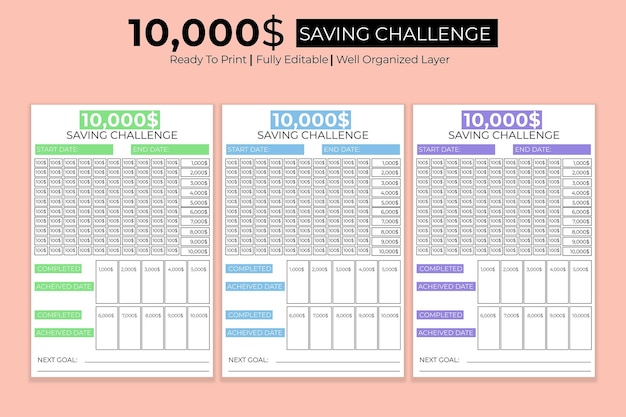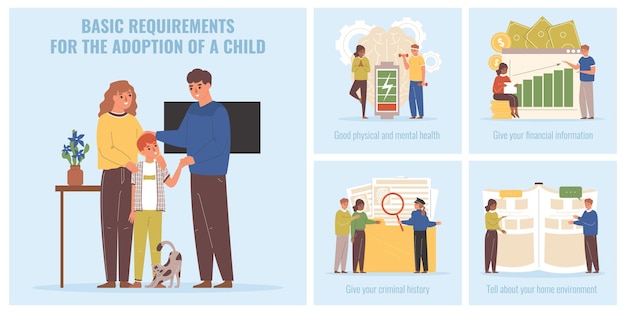Maximize Your 2025 EITC Refund: A Comprehensive Guide

The Earned Income Tax Credit (EITC) is a crucial benefit for low-to-moderate income workers and families, offering a significant tax refund; understanding eligibility, maximizing your claim, and staying updated on changes can greatly enhance your financial well-being in 2025.
Navigating the tax season can be daunting, especially when trying to understand complex credits and deductions. The Earned Income Tax Credit (EITC): Maximize Your Refund in 2025, however, is a valuable resource designed to help low-to-moderate income workers and families boost their financial stability.
Understanding the Earned Income Tax Credit (EITC)
The Earned Income Tax Credit (EITC) is a refundable tax credit for low- to moderate-income working individuals and families. It essentially reduces the amount of tax you owe and may give you a refund, even if you don’t owe any taxes. The EITC is designed to supplement the income of those who need it most, providing a crucial financial boost that can help with essential expenses.
EITC Eligibility Criteria
To qualify for the EITC, you must meet several requirements. These include having a valid Social Security number, being a U.S. citizen or resident alien, and not being claimed as a dependent on someone else’s return. Additionally, your earned income and adjusted gross income (AGI) must fall within specific limits, which vary depending on your filing status and the number of qualifying children you have.
Earned Income Defined
Earned income includes wages, salaries, tips, and other taxable compensation from work. It also includes net earnings from self-employment if you operate a business or work as an independent contractor. Unearned income, such as interest, dividends, and Social Security benefits, does not count toward the EITC.
- Verify your Social Security number is valid.
- Ensure you are a U.S. citizen or resident alien.
- Confirm your earned income and AGI are within the limits.
- Make sure you are not claimed as a dependent by someone else.
Understanding these basic requirements is the first step in determining whether you qualify for the Earned Income Tax Credit (EITC): Maximize Your Refund in 2025. By carefully reviewing your eligibility, you can ensure that you are taking full advantage of this valuable tax benefit.
2025 EITC Income Limits and Credit Amounts
Each year, the IRS updates the income limits and credit amounts for the EITC to account for inflation. These adjustments are crucial because they determine who is eligible for the credit and how much they can receive. Staying informed about these changes is essential for accurately calculating your potential refund.
Income Thresholds for Different Filing Statuses
The income limits for the EITC vary based on your filing status (single, married filing jointly, head of household) and the number of qualifying children you have. Generally, the more children you have, the higher the income limit. It’s important to consult the IRS guidelines or a tax professional to determine the specific income thresholds for your situation.
Maximum Credit Amounts for 2025
The maximum EITC amount also depends on the number of qualifying children. As of the latest updates, the maximum credit can range from a few hundred dollars for those with no qualifying children to several thousand dollars for those with three or more qualifying children. These amounts are subject to change each year, so staying updated is key.

- Check the IRS website for the latest income limits.
- Determine the maximum credit amount based on your family size.
- Use a tax calculator to estimate your potential refund.
Keeping track of the income limits and credit amounts ensures that you accurately gauge your eligibility and potential refund amount. By understanding these figures, you can better plan your finances and make the most of the Earned Income Tax Credit (EITC): Maximize Your Refund in 2025.
Qualifying Child Rules for EITC
One of the key factors in determining EITC eligibility and credit amount is whether you have a qualifying child. The IRS has specific rules defining who qualifies as a child for the purposes of the EITC. Understanding these rules is crucial for claiming the credit accurately.
Age, Residency, and Relationship Tests
To be a qualifying child, the individual must meet certain age, residency, and relationship tests. Generally, the child must be under age 19 (or under age 24 if a student) at the end of the year. They must also live with you in the United States for more than half the year, and they must be your son, daughter, stepchild, foster child, sibling, step-sibling, or a descendant of any of these.
Special Rules for Divorced or Separated Parents
Special rules apply to divorced or separated parents. Generally, the custodial parent (the parent with whom the child lives for the greater part of the year) is the one who can claim the child for the EITC. However, there are exceptions, such as when the custodial parent releases their claim to the noncustodial parent.

- Ensure the child meets the age requirements.
- Verify the child lives with you for more than half the year.
- Confirm the child meets the relationship test.
- Understand the special rules for divorced or separated parents, if applicable.
By carefully navigating these rules, you can ensure that you are correctly claiming the Earned Income Tax Credit (EITC): Maximize Your Refund in 2025. Proper understanding of these requirements helps avoid potential errors and ensures you receive the maximum credit amount you’re entitled to.
How to Claim the EITC on Your Tax Return
Claiming the EITC involves completing specific forms and providing accurate information on your tax return. Understanding the process and required documentation is essential for a smooth and successful claim. This section will guide you through the steps necessary to claim the EITC correctly.
Form 1040 and Schedule EIC
To claim the EITC, you must file Form 1040, U.S. Individual Income Tax Return. Additionally, you will need to complete Schedule EIC (Earned Income Credit) and attach it to your Form 1040. Schedule EIC requires information about your qualifying child, such as their name, Social Security number, and relationship to you.
Required Documentation and Information
You’ll need to provide documentation to support your claim, such as Social Security cards for yourself and your qualifying children. If you are self-employed, you will also need to provide documentation of your income and expenses. Accurate records are crucial for substantiating your claim.
Claiming the EITC involves completing the required forms accurately and providing all necessary documentation. By following these steps carefully, you can ensure a smooth and successful claim for the Earned Income Tax Credit (EITC): Maximize Your Refund in 2025.
Common EITC Mistakes to Avoid
Many taxpayers make common mistakes when claiming the EITC, which can result in delays in processing their tax return or even denial of the credit. Being aware of these mistakes and taking steps to avoid them is essential for a smooth and successful claim. Here are some common errors to watch out for.
Incorrectly Reporting Income
One frequent mistake is incorrectly reporting income. This includes overstating or understating your earned income, which can affect your eligibility and the amount of the credit. Ensure you accurately report all income sources, including wages, salaries, tips, and self-employment income.
Failing to Meet the Qualifying Child Rules
Another common error is failing to meet the qualifying child rules. This can occur if you misinterpret the age, residency, or relationship requirements. Double-check that each child you claim meets all the necessary criteria to avoid this error.
- Accurately report all sources of income.
- Ensure each child meets the qualifying child rules.
- Avoid claiming a child who does not meet the requirements.
By being mindful of these common mistakes and taking steps to avoid them, you can increase your chances of a successful claim for the Earned Income Tax Credit (EITC): Maximize Your Refund in 2025. Accurate and careful preparation is key to receiving the credit you’re entitled to.
Resources for EITC Assistance
Navigating the EITC can be complex, and many resources are available to help you understand the credit and claim it correctly. Utilizing these resources can provide valuable assistance and ensure you’re taking full advantage of the EITC.
IRS Free File and Volunteer Income Tax Assistance (VITA)
The IRS offers free services like IRS Free File, which allows eligible taxpayers to file their taxes online for free. Additionally, the Volunteer Income Tax Assistance (VITA) program provides free tax help to those who qualify, including low-to-moderate income individuals, seniors, and people with disabilities.
Tax Counseling for the Elderly (TCE)
The Tax Counseling for the Elderly (TCE) program offers free tax help to seniors, regardless of income. TCE volunteers specialize in tax issues unique to seniors, such as retirement income and Social Security benefits. This resource can be invaluable for older taxpayers.
There are several resources available to help you understand and claim the EITC. By utilizing these services, you can ensure you’re accurately claiming the Earned Income Tax Credit (EITC): Maximize Your Refund in 2025 and maximizing your potential refund.
| Key Point | Brief Description |
|---|---|
| ✔️ Eligibility | Check income, residency, and family status. |
| 📝 Filing | Use Form 1040 and Schedule EIC. |
| 🚫 Mistakes | Avoid income and qualifying child errors. |
| 👨💼 Assistance | VITA and TCE offer free tax help. |
Frequently Asked Questions (FAQ)
▼
The EITC is a refundable tax credit for low-to-moderate-income workers and families, reducing the amount of tax owed and potentially providing a refund.
▼
Eligibility depends on income, filing status, and whether you have a qualifying child. You must have a valid Social Security number and meet certain residency requirements.
▼
Claim the EITC by filing Form 1040 and Schedule EIC with your tax return. Provide accurate information about your income and any qualifying children.
▼
Common mistakes include incorrectly reporting income, failing to meet qualifying child rules, and not providing required documentation. Double-check all information.
▼
Resources like IRS Free File, VITA, and TCE offer free tax assistance to eligible individuals, providing guidance on claiming the EITC correctly.
Conclusion
The Earned Income Tax Credit is a valuable resource for those who qualify. By understanding the eligibility criteria, accurately reporting your income, and avoiding common mistakes, you can maximize your refund and improve your financial well-being. Taking advantage of available resources like IRS Free File and VITA can further simplify the process, helping you claim the Earned Income Tax Credit (EITC): Maximize Your Refund in 2025 with confidence.
